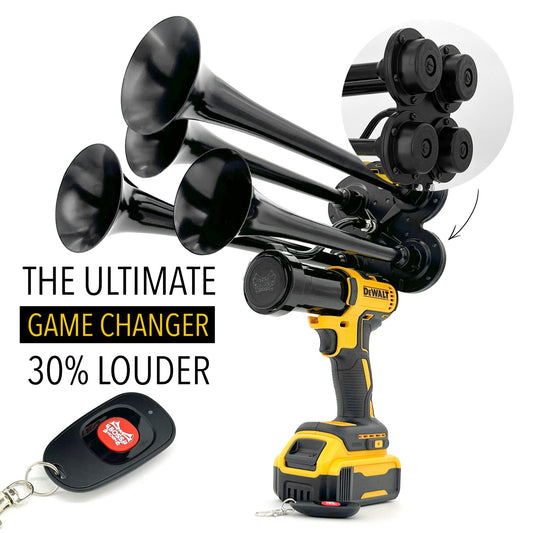Did you know that the loud, buzzing sound heard at soccer games around the world is made by an instrument known as a vuvuzela? These plastic horns have become synonymous with the excitement and energy of soccer matches, creating a unique atmosphere for players and fans alike. Originating in South Africa, vuvuzelas were first used at soccer games in the early 2000s before gaining popularity and spreading to other countries.
Today, vuvuzelas are a common sight at major soccer events, including World Cup matches and league games. While some may find the loud noise of the vuvuzela to be disruptive, others see it as an essential part of the soccer experience. These horns have even been credited with boosting morale among players and fans, creating a sense of unity and spirit that transcends language barriers.
In response to complaints about the noise level of vuvuzelas, some stadiums and events have implemented regulations to limit their use. For example, some venues have designated sections where vuvuzelas are allowed, while others have banned them altogether. Despite these restrictions, vuvuzelas continue to be a popular choice for fans looking to show their support and enthusiasm for their favorite teams. Whether loved or loathed, vuvuzelas have undeniably left their mark on the world of soccer.
Are Soccer Game Horns an Essential Part of the Game Experience?
Soccer game horns, also known as vuvuzelas, are loud instruments commonly used by fans to show support for their teams during matches. These plastic horns produce a distinctive buzzing sound that can be heard throughout the stadium. While some fans argue that the horns add to the excitement of the game, others believe that they can be disruptive and annoying. In the following section, we will explore the history of soccer game horns and their impact on the overall game experience.
Soccer game horns, also known as vuvuzelas, have become a staple at football matches all over the world. These loud and buzzing instruments add to the atmosphere of the game and are often used by fans to show their support for their team. However, opinions on vuvuzelas are divided, with some loving the energy they bring to the stadium, while others find them annoying and distracting.
Vuvuzelas originated in South Africa and gained worldwide attention during the 2010 FIFA World Cup held in the country. The sound of thousands of vuvuzelas filling the stadiums became synonymous with the tournament and created a unique atmosphere that was unlike any other football event.
Despite their popularity, vuvuzelas have been banned in some stadiums due to complaints about the noise levels and potential hearing damage. However, many fans continue to bring them to games and use them as a way to show their passion for the sport.
In recent years, other types of horns have also become popular at soccer games, such as air horns and bugles. These instruments add a different sound to the stadium atmosphere and are often used in combination with vuvuzelas to create an even louder and more energetic environment.
Love them or hate them, soccer game horns have become a part of the football experience for fans around the world. Whether they are cheering on their favorite team or simply enjoying the game, the sound of horns ringing out in the stadium is sure to make any match more memorable.
Statistics:
- The vuvuzela was officially banned from stadiums in the English Premier League in 2010.
- Over 2 million vuvuzelas were sold during the 2010 FIFA World Cup in South Africa.
- The sound of a vuvuzela can reach up to 127 decibels, which is equivalent to a jet engine at takeoff.
https://youtube.com/watch?v=8mZApxLPr6A
Question: What are those loud noise-making devices commonly heard at soccer games?
Answer:
Those noise-making devices heard at soccer games are known for enhancing the energetic atmosphere of the match. They are popular among fans for creating a vibrant and engaging experience.
1. Noise-making devices add excitement and energy to the game.
2. They are popular among fans for creating a vibrant atmosphere.
3. These devices enhance the overall experience of attending a soccer match.
Question: How do fans use noise-making devices during soccer games?
Answer:
Fans use noise-making devices during soccer games to show support for their favorite team and players. These devices are often blown or sounded in unison to create a unified cheering effect that can be heard throughout the stadium.
1. Fans use noise-making devices to show support for their favorite team.
2. Devices are often blown or sounded in unison for a unified cheering effect.
3. The noise from these devices can be heard throughout the stadium.
Question: Is the use of noise-making devices regulated at soccer games?
Answer:
The use of noise-making devices at soccer games is often regulated to ensure that they do not disrupt the game or cause harm to others. Many stadiums have specific guidelines in place regarding the use of these devices to maintain a safe and enjoyable environment for all attendees.
1. Use of noise-making devices is often regulated to prevent disruption.
2. Guidelines are in place at many stadiums to ensure a safe environment.
3. Regulations aim to maintain an enjoyable experience for all attendees.
Question: What are the most common noise-making devices used at soccer games?
Answer:
The most common noise-making devices used at soccer games include air horns, vuvuzelas, and rattles. These devices are known for their loud and distinctive sounds that add to the excitement and energy of the match.
1. Air horns, vuvuzelas, and rattles are common noise-making devices.
2. Devices are known for their loud and distinctive sounds.
3. These devices enhance the excitement and energy of the soccer match.
Question: Are noise-making devices a traditional part of soccer culture?
Answer:
Noise-making devices have become a traditional part of soccer culture, with fans using them to display their enthusiasm and support for their favorite teams. The use of these devices dates back many years and has played a significant role in creating the lively atmosphere associated with soccer games.
1. Noise-making devices have become a traditional part of soccer culture.
2. Fans use devices to display enthusiasm and support for their favorite teams.
3. The use of noise-making devices dates back many years in soccer culture.
Conclusion
In conclusion, soccer game horns add an electrifying atmosphere to any match, becoming a staple of the sport. Their loud and vibrant sounds energize both players and fans, creating an unforgettable experience. From the traditional vuvuzelas to modern air horns, these instruments have become synonymous with the passion and excitement of soccer games worldwide. Love them or hate them, soccer game horns are here to stay as an integral part of the beautiful game.














